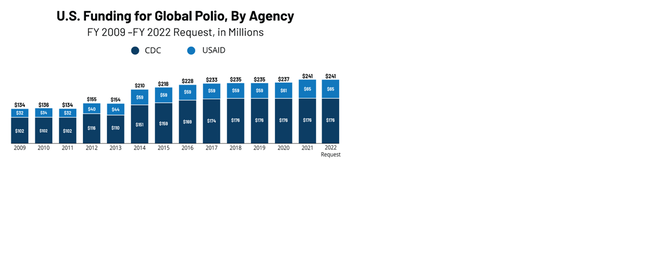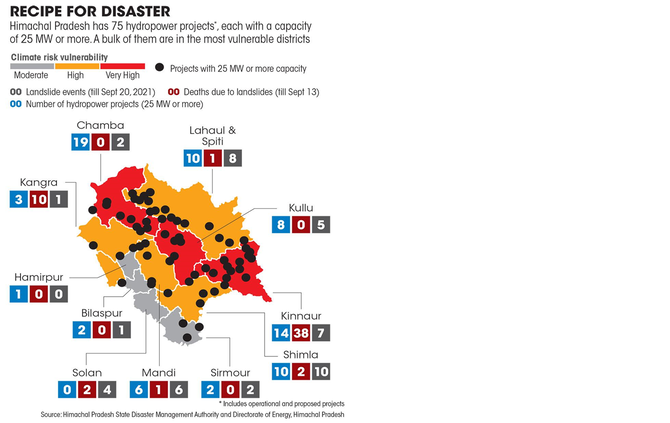Grameen Udyami Project launched (GS Paper 2, Governance)

Why in news?
- National Skill Development Corporation (NSDC) in partnership with Seva Bharti and Yuva Vikas Society, launched the second phase of Grameen Udyami Project.
Mandate:
- Under the initiative, the endeavour is to multiskill India’s youth and impart functional skills to them for enabling livelihoods.
- Prime Minister has emphasised on the involvement of tribal communities in the workforce, ensuring their holistic development to make them self-reliant and contained within their respective geographies.
What is Grameen Udyami?
- Grameen Udyami is a unique multiskilling project, funded by NSDC that aims to train 450 tribal students in Madhya Pradesh and Jharkhand.
- The project is being implemented in six states— Maharashtra, Rajasthan, Chhattisgarh, Madhya Pradesh, Jharkhand, and Gujarat.
Training:
- The phase-II of the pilot project launched in Ranchi is being implemented by Yuva Vikas Society, through Seva Bharti Kendra in Ranchi. NSDC under the aegis of MSDE has supported in setting up of labs and classrooms through Sector Skill Councils (SSCs) in Seva Bharti Kendra Skill Development Center.
The training under the project will be conducted in the following Job roles, which are relevant to the local economy.
- Electrician & Solar PV Installation Technician
- Plumbing & Masonry
- 2-Wheeler Repair & Maintenance
- IT/ITES with e-Governance
- Farm Mechanization
Sansadiya Parisankul Yojana:
- Grameen Udyami Yojana is implemented under Sansadiya Parisankul Yojana.
- Further, Scheduled Tribe organizations called for a 'Parliamentary ST Cluster Development Project' which has been initiated. Under which, 49 clusters in 15 states of India have been selected by 40 tribal MPs of Lok Sabha and Rajya Sabha.
- Under their leadership, the scheme in respective clusters will be implemented. One development associate is appointed by the MPs in each cluster.
Following objectives must be achieved under the project:
- Increase in Rural/Local Economy
- Enhance employment opportunities
- Reduce forced migration due to lack of local opportunities
- Conservation of natural resources
Way Forward:
- Due to lack of skill and education, organized sectors have very poor contribution in tribal livelihood as compared to the national average. Therefore, initiatives like Grameen Udyami project are critical for their betterment and to ensure their livelihood generation.
Mithila Makhana registered with GI Tag
(GS Paper 3, Economy)
Why in news?
- Recently, the government has awarded Geographical Indication (GI) tag to Mithila Makhana, a move that is expected to help growers get the maximum price for their premium produce.
- Due to geographical indication tag to mithila makhana in the festive season, people outside Bihar will be able to use this auspicious material with reverence.

Significance of GI tag:
- Once a product gets this tag, any person or company cannot sell a similar item under that name. This tag is valid for a period of 10 years following which it can be renewed.
- The other benefits of GI registration include legal protection to that item, prevention against unauthorised use by others, and promoting exports.
Process of registration of GI products:
- Typically, such a name conveys an assurance of quality and distinctiveness, which is essentially attributable to the place of its origin.
- There is a proper process of registration of GI products which includes filing of application, preliminary scrutiny and examination, show cause notice, publication in the geographical indications journal, opposition to registration, and registration.
- Any association of persons, producers, organisation or authority established by or under the law can apply. The applicant must represent the interest of the producers. It is a legal right under which the GI holder can prohibit others from using the same name.
About GI Tag:
- A GI is primarily an agricultural, natural or a manufactured product (handicrafts and industrial goods) originating from a definite geographical territory.
- The famous goods which carry this tag include Basmati rice, Darjeeling Tea, Chanderi Fabric, Mysore Silk, Kullu Shawl, Kangra Tea, Thanjavur Paintings, Allahabad Surkha, Farrukhabad Prints, Lucknow Zardozi, and Kashmir Walnut Wood Carving.
About makhana:
- Popularly known as makhana, foxnut comes from the plant prickly water lily (Euryale ferox) which grows in the stagnant water of wetlands or ponds.
- Bihar is currently the world’s biggest producer of makhana with a 90 percent share.
- Almost 90 per cent of production comes from 9 districts of Bihar i.e., Darbhanga, Madhubani, Purnea, Saharsa, Katihar, Supaul, Sitamarhi, Araria and Kishanganj.
- Makhana is often marketed as an organic, gluten-free snack and superfood due to its nutritional value.
Polio cases reemerge in several Western nations
(GS Paper 2, Health)
Why in news?
- While nations were dreading COVID-19 and taking precautions to put an end to its spread, resurgence of polio in some of the developed nations has sparked a new concern amidst the pandemic.
- According to UNICEF, since 1988, the number of children paralysed by the virus has dwindled down to 99 per cent.
Countries impacted:
- Polio, a deadly disease which was declared eradicated in many countries, has posed a worry for health authorities of the United States, United Kingdom and Israel.
- It started after the paralysing disease re-emerged in western nations, despite effective vaccines being widely available against the illness.
- There is no denying the fact that extraordinary advances have been made in the medical field in a bid to eradicate wild polio.
Polio eradication:
- While there is no cure for polio, it may be prevented through a vaccine that can protect a child for life. The humanitarian aid organisation informs that Pakistan and Afghanistan are the last nations wherein polio falls in the category of endemic.
As per a UNICEF report, Africa was declared free of wild polio in 2020, after Nigeria received zero wild polio cases. Unfortunately, some cases have now started to re-emerge again in the continent, making it the first case of wild polio in Africa in five years.
Recent cases:
- In August 2022, health authorities identified polio virus in the wastewater of New York City, suggesting the local transmission of the virus.
- Soon after this, a 20-year-old New York man was diagnosed with polio, and his leg was paralysed.
- In February, Malawi announced its first case in three decades in a three-year-old girl. In addition, Pakistan itself reported 14 cases, of which eight were recorded in a single month.
- Moreover, Israel witnessed its first case in March, since 1988.
- Then in June, British authorities reportedly went on to declare this an “incident of national concern”, when the authorities found the virus in the sewage.
- And now, polio eradication appears to be as elusive as ever.
Himachal prone to natural disasters, says study
(GS Paper 3, Environment)
Why in news?
- Recently, Himachal’s State of Environment report was released by the Department of Environment, Science and Technology.
- As Himachal Pradesh experiences nature’s fury in the form of landslips, cloudbursts, flash floods, avalanches and droughts year after year, natural hazards have become a matter of immediate concern.
Key Highlights:
- The report points out that mountain areas are highly vulnerable to natural disasters, where development over the years has compounded the problem by upsetting the ecological balance of various physical processes.
- The increased pressure on the mountain environment has contributed in some measure to environmental problems such as landslips, land subsidence, removal of vegetation and soil erosion.
- According to one estimate, about 58.36% of the land is subjected to intense soil erosion, much of which is located in the Himalayas, and Himachal Pradesh, which forms part of the western Himalayas, is environmentally fragile and ecologically vulnerable.


Relief and rehabilitation measures:
- The fragile ecology of Himachal Pradesh coupled with large variations in physio-climatic conditions has rendered it vulnerable to the vagaries of nature. The incidence of cloudbursts in the last few years has been unprecedented.
- Notwithstanding, the continuous efforts made by the government to cope with natural hazards through relief and rehabilitation measures, landslides and snow avalanches continue to inflict widespread harm and damage to human life as well as property.
- The roads that are the State’s lifeline are repeatedly damaged, blocked or washed away by one or other acts of nature. In the circumstances, the Government has to divert the already scarce resources of the state for relief and rehabilitation measures.
25 types of hazards:
- Himachal Pradesh is vulnerable to 25 out of 33 types of hazards identified by the Government of India. Moreover, the State is also confronting the emerging threats of climate change, and man and animal conflict.
- The report asserts that an attempt was made to develop a vulnerability matrix for the State as a whole.
- The overall vulnerability of the State on the basis of the matrix clearly suggests that the districts of Chamba, Kinnaur and Kullu, and parts of Kangra and Shimla, fall in the “very high” vulnerable risk status.
- Similarly, the districts of Kangra, Mandi, Una, Shimla, and Lahaul and Spiti, fall in “high” vulnerable risk status. The districts of Hamirpur, Bilaspur, Solan and Sirmour fall in the “moderate” vulnerable risk status.
Evaluation:
- The qualitative weightage was given on a scale of 0-5 for different hazards such as earthquakes, landslides, avalanches, industrial hazards, construction type, and density of population. A district-wise matrix was prepared by evaluating the risk severity.
- The evaluation also gave weightage to the density of the population likely to be affected. The matrix includes the evaluation of hazards likely to be induced on account of developmental works such as hydel projects, roads, and industries.
- In case of earthquake vulnerability, the devised matrix shows the districts of Kangra, Hamirpur and Mandi fall in the “very high” vulnerability category.
Shimla high vulnerable:
- The districts which fall in the “high” earthquake vulnerability category are Chamba, Kullu Kinnaur, and a part of the Kangra and Shimla districts, whereas the “moderate” and “low” vulnerable districts are Una, Bilaspur, Sirmour and Solan, Shimla, and Lahaul-Spiti respectively.
- The landslip vulnerability in the case of Chamba, Kullu, Kinnaur, and parts of Kangra and Shimla districts is ‘high’, followed by Kangra, Mandi, Bilaspur, Shimla, Sirmour, and Lahaul-Spiti districts falling in the ‘moderate’ category. The areas falling in the ‘low’ vulnerable category are the districts of Una, Hamirpur, and Solan.
- The avalanche hazard vulnerability map suggests that the districts of Lahaul-Spiti and Kinnaur are in the ‘very high’ vulnerability status, followed by Chamba, Kullu, and part of Kangra and Shimla as ‘moderate’ vulnerable areas.
- The flood hazard vulnerability map indicates that the areas in the districts of Chamba, Kullu Una, and Kinnaur fall in the “high” vulnerable category, whereas the Lahaul-Spiti, Mandi, Shimla, Kangra, Hamirpur, Bilaspur, Solan, and Sirmour districts fall in ‘moderate’ and ‘low’ vulnerability areas.





